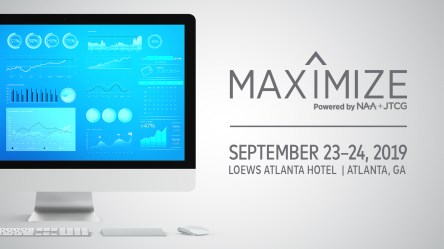A stellar online marketing strategy can be thwarted by negative reviews. The 2020 National Multifamily Housing Council & Kingsley Associates Apartment Resident Preferences Survey reports that 33% of renters highly value online reviews when deciding on an apartment. Are your reviews working for you or against you? Take the four steps below to ensure your online reviews are an asset. Who is paying attention to your online reviews? Renters of all ages use the internet for product research. Renters ages 25-34 years value online reviews the most. Nearly 40% of Millennial renters “highly value” the content of online reviews. While all your residents appreciate good customer service, younger renters are more likely to take their opinions to the web. They’re also more likely to seek out the opinions of others before deciding on a property. While some of the young renters are residents, most are prospects. Curiously, they’re searching out negative reviews. Studies show that since there are more positive reviews than negative ones, negative reviews are given greater value. Low-star reviews are scarce, so they’re held in higher esteem, like rare gems or box seats at a sporting event. That is why dissatisfied residents need extra care. Per the White House Office of Consumer Affairs, dissatisfied customers typically tell nine to 15 other people about their experience in person. The availability of online reviews can quickly escalate their reach. The negative review of a dissatisfied resident will reach hundreds of prospects each day, prospects who are already looking for negative reviews to narrow their apartment options. The four tips below can help you avoid and mitigate negative online reviews while boosting your positive online presence. Resolve issues online before reviews are posted online When renters have a concern, they are going to get online....
Mobile Branding Matters
Your Brand in Renters’ Hands
Take a guess. How much time do you spend on your phone every day? Add up all those downward glances, text replies, phone calls and photo filters. If you’re like the average American, you spend 5.4 hours on your smartphone. And if you’re like me, that’s way more than you expected. Those numbers come from a recent study asked 2,000 smartphone users to check their phone settings and report their screen time. Not only did the study reveal just how attached we all are to our devices, but it showed that usage across generations is similar. Millennials spend only a little bit more time on smartphones (5.7 hours) than baby boomers do (5 hours). Over 50 times a day, we’re checking our phones. This year, Gartner anticipates that there will be over 20 billion connected devices. Just imagine how much more dependent we’ll be as these tools continue to pervade our homes and habits. Smart devices have led to incredible innovations, and they’re changing our lives like very few other communication technologies have before. By far one of the biggest differences is the way we interact with businesses. Why grab your car keys or dial a support line when the services you want are available at your fingertips in a mobile app? We now spend about 90% of our smartphone time in apps. Remember, that’s hours of every day. So for businesses looking to stay competitive, your mobile presence has to be top-notch. Of course, that goes for multifamily businesses too. You’ve spent so much time and money defining your brand strategy and designing your physical properties. Shouldn’t your mobile apps match? Put your brand in the palm of your residents’ hands Your residents are on mobile, so you should be too. Take advantage of this opportunity to connect with residents in the channels they prefer. “But wait,” you might say. “What about our company website? Doesn’t that work on mobile too? Why do we need an app?” Mobile websites are a valuable resource, but they can’t do everything a native mobile app can. Your mobile website is most often a shrunken version of the desktop website, accessible only from a browser and unable to offer a unique user experience or leverage phone capabilities like GPS, cameras or notifications. To top it off, consumers simply prefer mobile apps – by a large margin. One report suggests up to 85% of people prefer apps over mobile sites. Why? Convenience, speed and ease of browsing. It’s not just a matter of preference either. Apps have shown practical results as well. The conversion rate for apps is more than three times higher than on mobile websites. And if the app is poorly designed, 55% of people say it’d put them off using a company’s products or services, and nearly as many would be less likely to recommend the company to others. Clearly, your mobile app experience matters. It’s why we’re excited to introduce MyCafé by RENTCafé. The new white label mobile app for residents helps you promote your brand on the devices they use every day. Build awareness for your business and offer residents the convenience they expect in an app you own. You can brand the look and feel of the entire experience: Pick an app name that renters recognize Select colors to reflect your brand Feature images of your own properties Upload an icon that stands out Customize menu options to fit your needs MyCafé has the same powerful and popular features that are built into our standard RentCafe Resident app. Your renters can submit maintenance requests, make online payments, reserve amenities, interact with neighbors and more, all from their smartphone. And your property managers have the ability to offer lease renewals and electronic signatures on the go, with push notifications to let residents know when action is needed. If your property already uses RENTCafé Resident, you won’t have to...
Efficient Conversions...
How to Nurture Leads
According to Gleanster, only 25% of your marketing leads are prepared to buy. About 50% of leads enter a sales funnel undecided. That leaves a noteworthy 50% of leads that are dropped or go cold. Improving how you nurture leads and how to streamline that process can help you achieve more conversions and see greater returns on your marketing dollars. First step: optimize your first contact Making the most of your first contact with a lead is crucial to nurturing that relationship and prompting the conversion. At the widest part of the sales funnel, you’re putting in the legwork of lead generation. Your brand is making an impression on prospects via ads, listings, and other marketing initiatives. Towards the middle of the funnel, your prospects are showing interest. They’re responding to your marketing strategy. Perhaps they’ve filled out a contact card or visited the property. That first contact is essential. Use robust customer relationship management (CRM) software to store prospect contact information. In addition to traditional data such as phone and email, also request social media handles. Even if you don’t “friend” each prospect, you gain a better insight on their preferred platform for social media marketing. It is equally important to record lead attribution. That’s how the prospect found you such as the social media platform, website, or ad that convinced them to make contact. Getting this information will help you identify the highest quality lead sources and focus your future marketing dollars accordingly. Learn how to optimize multi-source lead attribution. Be sure that you’re entering prospect data into a CRM system that integrates with your property management software. This step improves efficiency by eliminating multiple points of data entry for the same prospect. It also decreases the likelihood of duplicate entries and...
Home, Office
Multifamily + Coworking
Home is where the heart is, as well as the home office for some. All the time at home in front of a computer, however, can lead to feelings of isolation, a lack of inspiration, and a lack of meeting space for collaboration. Remote employees and freelancers turn to coworking spaces for help. To avoid a hectic commute, they seek coworking offices that are as close to home as possible. Herein lies renters’ problem that is an opportunity for multifamily and coworking owners. As the number of digital nomads grows, it outpaces coworking space availability especially in midsize and tertiary markets. Many multifamily communities aren’t equipped with the space, staff, or equipment needed to successfully operate their own coworking space on premises. This is where a collaboration between coworking organizations and multifamily properties can fill the void. Renters want coworking space but providers face challenges The 2020 National Multi-housing Council & Kingsley Apartment Resident Preferences Survey indicates that 46% of renters are interested in coworking space as a community amenity. Additionally, 48% are interested in conference or meeting rooms and 37% take interest in makerspace and DIY rooms. Unfortunately for renters outside of major metropolitan areas, coworking spaces are too far away, face limited availability, or are quite pricey. Some property managers will accommodate renters by creating a coworking space within the community. When space and staff are limited, that simply isn’t an option. For coworking firms outside of major metros, high rents may necessary to stay afloat with inconsistent membership revenues. A reliable base of clients would offer stability and an opportunity for growth but getting such leads is a struggle. Multifamily property and coworking leadership may be able to work together with mutual benefit. Considerations for coworking and multifamily property managers Space...
The Mobile Advantage
Resident Satisfaction with Mobile Apps
Your resident portal is a convenient and secure connection to your renters. While some renters like to access the resident portal via computer, studies show that most renters prefer to use a mobile app. If your current resident portal doesn’t offer a robust mobile option, you’re missing out on three key points for resident satisfaction. What renters want: convenience and efficiency with a mobile app According to the 2020 National Multifamily Housing Council (NMHC ) & Kingsley Apartment Resident Preferences Survey, community mobile apps are in high demand. Community apps permit a secure and mobile-ready way for users to access resident portals without using a web browser. Renters access mobile apps directly via smartphone or tablet, two devices that most of us always have within reach. In contrast, websites are best viewed via web browser on a laptop or desktop computer, which we don’t always have on hand. A community mobile app can promote renter satisfaction in three distinct ways. Mobile apps improve communication, task management, and daily operations for renters Residents prefer to communicate via mobile app more than conventional methods. About 60% of survey respondents prefer for leasing management to contact them via mobile app. Only 17% prefer contact through the website portal. On average, 64.5% of renters prefer to receive notifications through a mobile app. For example, 71.5% of renters want to receive mail and package notifications through the community mobile app. An app is also a preferred way to manage a household. On average, 58% of respondents prefer to pay rent via mobile app compared to only 23% who want to pay through the website portal. About 64% of renters want to submit maintenance requests via app. Even a formal event, like a lease renewal, is suitable for the app:...
5 Social Media Strategies
Get Ready for 2020
Social media platforms and technologies have redefined how multifamily managers engage with customers to attract, convert and retain residents. According to one survey, people spend one-seventh of their time on social media. In a crowded online environment, does your corporate or property social media strategy have what it takes to stand out and get noticed? Get ready for 2020 with these five smart social media strategies. Plan for the future by looking to your past. By analyzing current social performance data, setting realistic goals, and planning your social content calendar ahead of time, you’ll be set up for success in 2020. Get started: Do a social media audit Set your goals for 2020 Map out your path with this social media planning guidebook Get your proposal ready And if you’re new to social media marketing, here’s a great checklist on how to get started. Beat the algorithms. Multifamily marketers are competing with crowded social platforms and everchanging algorithms. Get a head start on 2020 by considering these strategies: New mediums, such as 3D photos, 360-degree videos and Facebook Live, are incentivized by Facebook, so being an early adopter is a smart move. This applies to other social networks too. Have you considered TikTok or Snapchat? As the saying goes, the early bird gets the worm. Those early to adopt can benefit from incentives like higher visibility and increased engagement rates. Investing in quality photography across your social media accounts and website can benefit your brand by showcasing your resident culture in a highly visual way. Not only do high-quality photos and video perform better, but they also provide a glimpse of the experiences offered at your community. Consider hiring a professional or purchasing equipment to create high-quality photos. Learn from top multifamily marketers and digital marketing experts at the 2020 Multifamily Social Media Summit. On Thursday, Jan. 9, join Kelley Shannon, the Bozzuto Group’s senior vice president of marketing & customer engagement and Esther Bonardi, vice president of marketing at Yardi Systems to understand how social media and digital reputation strategies have evolved, and what it will take to influence social savvy renters in 2020 and beyond. Get personal with your customers. Personalized experiences between brands and customers is becoming the norm. “Brands that haven’t focused on relationship marketing techniques will either spend more on their pay-to-play model or dive into building and hosting community conversations that create brand advocates and support a belonging vs. buying mindset,” says Jessika Phillips, social media strategist and founder of NOW Marketing Group, with Social Media Examiner. Focusing on personalized service experiences will increase renter satisfaction and improve online reputation. Using smart marketing technologies can help businesses personalize the customer journey from lead to lease. Make automation your friend. Smart marketers are using automation to be consistently present in today’s increasingly busy digital world. Marketing automation reduces repetitive tasks, tracks user behavior and delivers targeted content. Nudge marketing, online tour scheduling and automated follow-ups can help improve the lead-to-lease experience for prospects as well as resident retention. Implementing marketing automation tools can also free up staff to focus on customer care and the unique needs of prospects and residents. Ready to take your marketing automation to the next level? Download our free eBook and discover nine strategies you can implement at your property now. Continue to learn. Whether it’s attending conferences like the 2020 Multifamily Social Media Summit, tuning into marketing podcasts and webinars, or making it a habit to stay on top of industry news, investing in yourself is a great building block for...
Let Pets Pay Off
How and What to Market for Success
The future is furry. According to the American Pet Products Association (APPA), 65 percent of Americans have pets. The number of households with pets is growing. Since 2014, the number of people who own pets has increased by 3 percent. Many of these households include your prospects and renters. Another major housing trends report from 2018 reveals that 46 percent of renters live with pets. Multifamily properties that adequately market their pet policies and services can thrive in this environment. What Renters Want About 47 percent of renters list allowing pets as a requirement for their next rental, reports the 2020 NMHC and Kingsley Apartment Resident Preferences Survey. Simply permitting pets isn’t enough. Nearly 45 percent of respondents expressed interest in on-site pet services. Pet services make caring for an animal in an apartment setting more convenient. In the absence of a personal yard, more than 50 percent of renters expressed interest in a dog park and 44 percent desired a pet-washing station. Those are just a few services that pique renters’ interest in the NMHC report. Other options include dog walking, pet-friendly community events, and animal health and safety activities. When properties offer value-add services for pets, pet owners report a greater sense of satisfaction with the community. That satisfaction can translate directly into conversions and lease renewals. Marketing that Gets Results Establishing your pet policy and an engaging selection of in-demand pet services are the first steps towards success. The next step makes sure that your hard work draws the cash flow that it deserves. Without advanced online marketing, prospects who would value your pet-friendly efforts may not find you. It’s important to intercept prospects at multiple points during their housing search. By reaching prospects are various touchpoints around the web, you can...
Attracting Renters
In New York City
The Bronx, Brooklyn, Manhattan, Queens, and Staten Island: together, they make up the most vibrant city in the world. But New York needs no advertising. Any New Yorker will tell you that each of the five boroughs has its own unique charm. So, what do renters expect when looking for an apartment in NYC? We compiled a short list of tips to attract potential renters in the Big Apple. Keep it clean Looking for an apartment that’s in move-in ready condition is a priority for most people looking to rent in New York City. As such, hiring regular, professional cleaners for the entire apartment building can do wonders to attract new renters. It also shows those who already live there that the building management looks out for their well-being. Make sure any maintenance issues are handled before a showing—no matter how small. Keep it safe Whether it’s Brooklyn apartments for rent or apartments in Queens, feeling safe in the city that never sleeps is paramount for renters. This is why ensuring the safety of the premises is crucial. No matter whether your renters are in it for the long-term, maintenance support is key. Moreover, regular check-ups and upgrades to security systems and locks are essential. Keep it close Proximity to work, school, or anything of importance to the renter is an amenity most NYC renters would be willing to pay big bucks for. Once a prospect shows interest in your rental, it’s most likely because they are happy with the location or are willing to compromise. In NYC, proximity to public transit is one of the top criteria renters use when searching for apartments. Advertise convenient transportation options near the property’s location, but always be honest. Staten Island might be just a ferry ride...
Pet-Friendliest Cities...
Attract Renters and their Pets
Some days, you make look at your property lawn and wonder if it’s worth it to permit pets. Operating a pet-friendly community comes with its challenges. Your pet policy and unique services, however, are profitable differentiators when you’re amongst the nation’s most fur-friendly cities. RentCafe.com recently released its list of the 50 Best Cities for Renting with Pets. To create the list, the ILS analyzed pet-friendly rental listings across the nation. Analysts then factored in monthly pet rent, deposits, additional charges and amenities to determine the most pet-friendly cities for renters. When your city appears on the list, there are distinct benefits that can work in your favor. There are also challenges that, when overcome, give you and your properties even greater opportunities to shine. The Benefits While this list was published with renters in mind, property managers and owners can benefit from it as well. Pet-friendly apartments are in high demand: almost 70 percent of U.S. households own a pet, reports the 2017-2018 National Pet Owners Survey. Of those households, the American Veterinary Association estimates that 50 percent of renters have pets. Of the renters without pets, 35 percent said that they would have pets if allowed by landlords. By offering pet-friendly rentals, you can reach prospects with pets as well as those who want to have pets. That’s more than 80 percent of renters! You then have a healthy pool from which you can identify quality, low-risk renters with resident screening. The Challenges (+ the Work Arounds) If your city is on the list, it’s an indicator that you’ve got a lot of competition. You are in a city where plenty of multifamily communities accept pets. To stand out, you’ve got to outshine the competition. Draw in prospects with your carefully curated amenities. These pet-friendly, value-add services...
A Match Made in Heaven
Self Storage + Multifamily Housing
The 2020 NMHC & Kingsley Apartment Resident Preferences Survey reports that 71 percent of rural renters and 70 percent of suburban renters ranked “additional storage outside apartment” as a top interest. Many multifamily properties, however, are not equipped with storage units for renters. Self-storage facility managers can fill the gap and benefit from a steady stream of clientele—if you make the right connections. Make an offer they can’t refuse Before the turn of the millennium, additional storage wasn’t as in-demand then as it is now. As a result, many older properties weren’t constructed with storage units for renters. Even some newer properties with storage options don’t have enough to meet demand. Such properties may prove to be your valuable partners. Renters who need storage may find the additional space they need at self storage facilities in the neighborhood. The challenge is to make sure that your storage facility tops their list. You could amplify your online marketing strategy, but that could be costly and time consuming. A captive audience, through a partnership with local apartment communities, could be a much surer path to success. Think about negotiating an incentive or deal for residents in nearby apartment communities. You’re interested in predictable, long-term clients. Multifamily agents want to meet prospects’ and renters’ demands for storage space outside of the unit. There is room for both parties to benefit. “Consider approaching the apartment community with a win-win proposal without a formal monetary reward if there is not another competing storage property within proximity. Pitch your storage property as a neighborhood amenity that the community manager can promote. Only offer a referral bonus if competition forces you to do so,” advises Mark Smith, Director of Marketing with Yardi. He continues, “Storage operators should consider (and continually re-evaluate) their new customer acquisition costs. Make sure that your referral bonus agreement with an apartment community is in line with your normal acquisition costs.” Benefit from verified clients Most multifamily properties vet their residents before allowing them to sign a lease. A verification of employment history, good credit standing, and background checks are quite common. In contrast, very few self-storage facilities require an in-depth approval process. When you create a relationship with an apartment community, you can benefit from their verification process. Multifamily renters go through additional steps that could in turn reduce your exposure to missed payments and other risks. You will still benefit, though, from your own due diligence. “Track all tenants that rented via referral programs and evaluate for ROI,” says Smith. “Are they tenants that have paid their bills and stayed long enough to provide a positive revenue stream, or are you better off terminating the agreement with the apartment community?” Put your best foot forward To secure your position as their preferred vendor, clearly detail what differentiates you from the competition. You then have a platform to confidently state your price because you have demonstrated the value that you can offer to their renters. There are a few key features that renters want in off-site storage. If you offer such features, be sure to highlight them in your proposal: Security In an ideal world, renters would safely store their belongings in their apartment. But with limited space, that isn’t an option. They rely on you to provide additional space that is also secure. Keyless access via a smartphone app or personalized keycodes are popular with renters. (Some use similar technology to access their apartments.) By implementing such tech, you can offer a secure way to access units without the burdens and risks of physical keys. Most renters expect security cameras and gated entry. Offering 24/7 staff availability (or at least extended office hours) adds an appealing layer of security and reassurance during emergencies or other issues. Ease of Use While renters want secure self-storage, they want to access it on demand. This is another place where keyless entry places you...
Must-Have Tech
Multifamily Innovations
Toronto recently hosted its very first Yardi Executive Briefing exclusively for multifamily clients. Participants explored the latest innovations in RentCafe and smart home technology. Below, we’ve highlighted the latest and greatest multifamily technology that you’ve got to have. Re-imaging Real Estate through Innovation Seven technologies are changing the future of multifamily housing: Untethered Connectivity: Voice-activated digital assistants handle everything from rent payments, maintenance requests, and adjusting the thermostat in a unit. Renters love the convenience, which adds to a unit’s perceived value. Smart Home Accessibility: Artificial intelligence and wireless connection unite to make smart home technology accessible to renters on the go. Via machine learning, apps within a smart car can determine when users are heading home. They can adjust the thermostat and fulfill other user preferences. Broadband Rules: Broadband connectivity is replacing cable as users complain of high cable prices and obnoxious bundled services. Begin negotiation with local broadband providers to offer services to your renters. Virtual Fitness: Don’t scrap your rarely used fitness center. Instead, give it a makeover by adding virtual fitness services. Renters value the option to have a virtual coach help them through workouts. Sleek + Chic: Renters appreciate smart home technology but don’t want bulky hardware interrupting their interior design. Technology needs to work on demand while blending functionality with interior design. Welcome the Robots: Drones for package delivery are a hot trend in metropolitan areas. If you haven’t already, plan and implement a concierge service to handle package deliveries. While you’re at it, designated parking spots and charging stations for autonomous vehicles may soon be a necessity. Modular Building is Cool Again: Unlike the first wave of prefab buildings in the 1930s, today’s modular homes are durable and highly customizable. Units can easily convert based on current...
A Sense of Community
Improving Renter Morale
Savvy property managers understand that a feeling of belonging created in a community of neighbors is priceless—especially for long-time renters—and can generate numerous benefits for residents and the property alike. From creating an inclusive living environment for everyone to improving retention, there are many positive aspects to be gained from one simple concept: a sense of community. But, how can you build a community from scratch, and incorporate new residents along the way? Observe the little things A strong community is easy to spot. People smile more, neighbors greet each other and are more open. This often reflects the way the premises are kept: the shared space is clean, and residents are more inclined to clean up after themselves or pick up litter to keep things orderly. Conversely, if people don’t seem to spend time in common areas, and there is visible trash or property damage, it could be a sign that the community needs some TLC. Get a different (social) perspective The secret to a low renter turnover has an emotional dimension. Creating bonds and fostering a sense of camaraderie between renters and property management—as well as among renters themselves—is often overlooked. It all boils down to promoting the social side of the apartment community instead of seeing just the business side. Seeing your property as more than just a physical space is a good start to put yourself in the renter’s shoes and understand why a sense of belonging weighs so heavily for many people. Always remember to ask for feedback and act on it accordingly. Keep in touch digitally Bulletin boards and community fliers are fine, but today’s renters need more than that to feel welcomed and wanted in a community. The answer to creating easy community engagement is simple: go...
5 Tech Takeaways
From NMHC OPTECH
NMHC OPTECH 2019 in Dallas was the place to be for multifamily real estate execs seeking strategies to raise their game using technology — especially looking ahead to a likely downturn. In lively peer roundtable discussions and dynamic property and revenue management workshops and sessions, industry insiders dove into the big issues facing multifamily businesses. Compelling strategies emerged for growing revenue, managing all lease types and improving the customer experience using new technology. Read on for our top five takeaways from this year’s event. Unleash data Gone are the days of making business decisions based on guesswork and backward-looking data aggregated into spreadsheets. Today, new technology automates data collection with advanced analytics to provide a complete picture of a portfolio’s opportunities and future risks. That’s big data, and it’s a big deal. At OPTECH, experts talked about the valuable business intelligence hiding in your company’s data, and how to capture it to improve all operational systems and processes from front office to back office, including revenue management and rental pricing. In the session “Apples to Apples: Getting Clean Consistent Data for Accurate BI” data experts and asset managers discussed evolving corporate best practices in performance data tracking. Starting with clean, reliable data from a single database for one source of truth is essential. Using a system that leverages that data with machine learning and artificial intelligence to deliver predictive analytics with recommended actions is keeping leading companies ahead of the curve. And don’t forget about futurecasting. You can get a clear picture of potential future income using reliable operational data. Smart forecasting tools drill down to lease level data and also factor in market conditions and industry dynamics, so you can stay agile and plan for what happens next. Protect information The...
Streamline Leasing
3 Smart Solutions
Are you looking for a more efficient way to convert quality prospects into satisfied residents? Streamline the leasing process through integration and automation. Software Integration Switching between independent leasing, management, and accounting programs ensures that your data will be incomplete or pocked with errors. At best, there is a lot of redundant data entry. Each distraction siphons time away from your staff’s resident care efforts. Skip the drama with a web-based, fully integrated end-to-end platform. Select property management software that can seamlessly manage marketing, leasing, accounting, utility and maintenance data under one roof. Learn how Cagan Management Group uses flexible, integrated software to simplify business operations. Automated Marketing Wouldn’t it be great if you could tailor your marketing message to meet prospects’ needs? You can. What’s better is that you can do so through automation, which means that you don’t need staff engagement 24/7. Automated nudge marketing, for example, delivers a targeted message to prospects based on their online behavior. You can encourage them to take the next step in the process, such as setting an appointment or completing an application. This can be done while your leasing office is closed. ILS automation is another huge time saver that also helps you fill vacancies. Sourced from up-to-date information in your property management software, ILS automation updates your listings across multiple online rental sites. It makes sure pricing and vacancies are accurate without manual data entry at each site. Discover more marketing automation tools that can save you time and money. Tools that Empower Residents Are you still making residents trudge down to the leasing office to pay the rent or file a maintenance request? You’re wasting their time and as well as your staff’s. Skip data entry, check scanning and bank runs. Resident portals...
Multifamily Rolls On
Yardi Matrix Update
The latest Yardi® Matrix U.S. multifamily market update illustrates good overall performance in the sector, with strong demand, steady new supply and consistent rent growth among the key characteristics. Demand for multifamily housing, driven by rising divorce rates, an aging population, and young people delaying marriage and raising children, figures to remain strong for the foreseeable future. Much of the economic growth powering demand is occurring in Southern and Western regions. Meanwhile, national supply growth can be expected to remain in line with 2018 deliveries for the next few years. The webinar update, conducted by Jeff Adler, Yardi Matrix vice president and general manager, and Jack Kern, director of research and publications, also debuted Yardi Matrix’s structured examination of political risk as an investment factor. The analysis weighs a metro’s affordability, philosophy toward affordability (e.g., rent control, zoning policies, permitting and entitlement requirements), urban policing/security, social mobility, tax burdens and unfunded pension liabilities. In the analysis’ first iteration, San Francisco, Chicago and New York had the highest risk scores among 20 major metros while Salt Lake City, Raleigh-Durham, N.C., Indianapolis and Nashville, Tenn., had the lowest. The scorecard is a work in progress, and Adler invited Yardi Matrix users to offer ideas for improving it. “Overall, the sector is performing well, but affordability remains a headwind,” Adler said. Public-sector responses such as rent control and zoning changes have been adopted in Oregon, California and New York City. Such approaches, however, are likely to touch off an exodus of investment capital and create disincentives for new investment, ultimately producing housing shortages. Adler outlined market-based approaches that let supply respond to demand. They include coliving, which minimizes space needs; Airbnb, which monetizes unused time; and modular designs, which lower construction costs. Seattle, Dallas, Denver, Houston and...
Coliving is Here
Why it Matters
You’ve heard about coworking, but how about coliving? Now is the time to learn more about this urban rental trend that’s gaining momentum with young renters across the country, including millennials looking to save money by sharing amenities. Not sure how this trend applies to your business? If you’re a multifamily property manager, you’ll want to keep reading. As the market appears to be headed for a downturn in the near future, flexible leasing strategies could be your best bet to recession-proof your properties and maximize rental revenue. What is coliving? Currently, coliving is mostly an urban trend with residents sharing a house, apartment or building. If you’re thinking of the kind of roommate arrangement that is the result of random pairings through online postings, think again. Today’s coliving spaces offer modernized community experiences — sometimes referred to as “intentional communities” — and often include options for more privacy and luxury, such as microsuites. Residents will usually have a private bedroom and sometimes a private bathroom. Shared spaces typically include kitchens, lounges, laundry rooms, gyms and rooftop areas for social gatherings. And while the experience is not too foreign for renters who’ve shared housing before, coliving spaces are usually cheaper than traditional rentals. For most coliving enthusiasts, the social connection is important — they don’t want to feel like they’re living in a hotel. The essence of coliving is bringing compatible renters together in one space, with an emphasis on the quality of relationships and experiences over the quantity of square footage. For single renters new to an area, coliving can provide a sense of community as they get to know their greater surroundings. For cash-strapped renters looking for great amenities or seriously swanky accommodations, coliving is the answer. And for the many young...
Market Trends
Make Room for 3.6 Million Families
Have you found it easier to move those three-bedroom units than before? For decades, larger units were tougher to rent. That narrative has changed in the recent years. New data projects the trend is likely to continue—and 3.6 million families may enter the rental market. Single-family rentals have experienced an ascent in popularity. The demand has encouraged the construction of 3.6 million units in the past decade. Yardi Matrix, an apartment intelligence provider, reports that 52 percent of the apartments built between 2006 and 2016 have at least two bedrooms. Of those, 41 percent are 2-bedroom units, 9 percent have three bedrooms and 2 percent have at least 4 bedrooms. Fewer families with young children can buy a home. As a result, families are making their mark on multifamily development by driving the demand for larger units and plenty of them. The Backstory The housing crisis was more than a decade ago, but the aftermath lingers. Greater restrictions on lending led to higher home prices and a grinding halt in new home construction. At the depth of the recession, home prices dropped–right along with job security–leaving fewer opportunities for families to confidently invest in a house. With fewer entry-level homes to meet their needs, young couples and families turned their eyes towards renting. Families with young children who own a home dropped by 3.6 million from 2006-2016 (the most recent U.S. Census). As the economy recovered, home prices surged disproportionately to salaries and rent rates. National real estate brokerage Redfin suggests that the median price of a single-family home increased by 35 percent in the past 5 years. That’s 75 percent faster than rent increases which rose by only 20 percent, reports Yardi Matrix. For context, when adjusted for inflation, workers’ wages only grew...
Your Next Property Manager
3 Vital + Uncommon Characteristics
Do you feel like you’re always hiring? You’re not alone. Multifamily property management turnover ranges from 21-54 percent. While there are many variables, you may experience low staff retention when prospective new hires lack necessary personality traits for the job. The requirements of today are different than even a five years ago. Modern property managers must possess these three characteristics to help you reduce turnover and improve resident satisfaction. 3 Traits of a Long Lasting Property Manager Teachable Experience can be a double-edged sword. A prospect with several years of experience may have difficulties adapting to the expectations of a new brand or new community. Rookies may have difficulty adjusting their textbook knowledge to meet real-world applications. Experience is less of an indicator of success than teachability. A teachable prospect will be receptive to learning new skills, flexible in the face of change, and dedicated to optimal outcomes. Tech Savvy Today’s property managers must be comfortable with technology. Daily interaction with property management software improves the efficiencies of accounting and leasing. The same holds true for basic marketing, maintenance, and smart home applications. An ideal candidate will be comfortable familiarizing themselves with the latest prop tech and supporting the organization with technology that drives efficiency and value. Responsive The internet never sleeps nor does a modern business. A property manager must be willing to promptly address issues (especially troublesome online reviews) and respond to community needs. Responsiveness is a leading indicator in resident satisfaction. We aren’t suggesting that your property manager sleep under the desk. Employees perform best with a work-life balance, but on-the-job responsiveness is key to success. Which characteristic is most important? In a perfect world, prospects would possess all the traits above. But what happens if tops prospects are lacking in one of the key areas? If one trait is most important, it would likely be teachability. A receptive, flexible, and dedicated employee can help your organization thrive. What personality trait have you found to be the most important in a successful property manager? Share your thoughts with us on...
Resident Retention
Through Culture + Branding
Want to know how to score more lease renewals? Part of your branding, resident culture, is key in transforming residents into long-term community members. The tips below will help you highlight resident culture as an asset. What is resident culture? Resident culture is part of your multifamily branding efforts. Branding is a broad umbrella that applies to your marketing, company identity, and employee profiles. Culture is the aerial view of each communities’ values, customs, and interests. Each community within a large portfolio may have a unique culture. Concepts within community culture align with the renter profile for each location. Resident culture in action Perhaps many renters at a property are young professionals employed by local tech companies. You may choose to highlight tech integration into that culture: use submetering and home automation to improve utility efficiency, organize community outings to local tech events, or host movie nights featuring “geek” protagonists. Perhaps pet-owners drive revenue in your community. *Post scheduled.* You can integrate pet care into your culture by hosting several pet-friendly events throughout the year. Consider field days with pet competitions or select days where dogs are welcomed at the pool. You can also invite pet specialists onto your property, like photographers and trainers, and negotiate discounted rates for residents. The concepts that represent your residents’ values, customs, and interests form the foundations of your culture. Articulate your culture when residents first arrive and throughout their stay to promote a higher lease renewal rate. Warm welcome, long stay Host Events for New Residents At least every quarter, host an event for new residents. This provides them with an opportunity to shake off the new kid jitters and forge friendships. Strong friendships promote resident retention. Make Yourself Available Let residents know that your team is...
6 Halloween Ideas
For Procrastinating PMs
By now, you’ve (hopefully) set the date and time for your Halloween event. Are you still struggling with the details on how to make it special? We’ve got your back. Check out these Halloween party ideas for multifamily communities. Let your residents do most of the work Community Boo Game The Boo Game is like tag, reimagined for busy grownups with varying schedules. Someone from the leasing office starts the game by leaving a card and a box of goodies at a resident’s door. Then the chain continues in the hands of residents! Check out the card idea below. Cookie Exchange Have residents bake Halloween-themed goodies. Participants can gather in the clubhouse to share their creations. This could also be a fun fundraiser if you opt to sell cookies for attendees who did not bring a contribution. (You can also collect donations from all participants, of course.) Chili Cook Off Cool weather calls for warm comfort foods. A chili cook off is a quick and inexpensive way to get residents involved in spooky season festivities. Like the cookie exchange, it can be an exchange or donation-based event. Community Outing Find a local theatre playing Rocky Horror Picture Show or Halloween-themed films. Pick a film (or have residents vote if there is time). Have interested residents RSVP and then call the theater to block off a section for a show. If you’re lucky enough to be in pedestrian friendly district, top it off with bar hopping afterwards. Easy win! Discover how easy it can be to promote your event on social media. Smooth ways to promote your corporate values Pet Costume Party Pet costume parties are a great way to remind residents that their furry companions are a valued part of the family. Providence Place...
A Safe Haven
Matrix Multifamily Market Update
Virtually all signs are positive for the U.S. multifamily market, notwithstanding a $1 decline in the average rent in September 2019. In fact, a new national report from Yardi Matrix characterizes the sector as “the picture of stability” amid slowing overall economic growth, gyrating equity markets and international trade tensions. Rents are up 2.9% year-to-date through September and the average national occupancy rate has been above 95% for several years. Housing trends suggest that demand will remain strong for some time to come, with rents likely to remain steady through the fall and winter months as new supply gets absorbed. These trends have produced a favorable investment scenario, according to the report: “It’s no wonder that investors looking for a safe haven and surprise-free returns have identified multifamily as an asset class in which to increase allocations.” Other highlights from the report include a breakdown of year-over-year rent growth across all asset classes and across lifestyle and rent-by-necessity asset classes. There’s also an examination of rent growth on a trailing three-month basis for those categories, along with a look at supply, capital market trends and a discussion of the federal government’s proposed reform of Fannie Mae and Freddie Mac. All that, and more, is in the Yardi Matrix multifamily national report for September...
Online Payments
7 Advantages for Multifamily
Are online payments really worth the fuss? The short answer is yes! But don’t take our word for it. Check out seven reasons why online payments are a necessity for successful communities. Renters Seek Convenience Today’s residents love their smartphones. “According to recent reports, the average American checks their smartphone almost 50 times per day. For millennials, the number is even higher, at 74 times per day. With half of the renter population under the age of 30, digital technology is a game changer at apartment communities for both the residents and property managers,” said Esther Bonardi, vice president of marketing at Yardi. Online banking is one of many tasks that modern renters perform on their smartphones. It offers the simplicity that renters crave: more than two-thirds of respondents to the NMHC Consumer Housing Survey said they seek technologies to make their lives easier. You Seek a Competitive Advantage Offering online rent payments gives your communities a competitive advantage. The most recent NMHC Kingsley study reveals that more than 25 percent of respondents currently pay their rent electronically. Nearly four times as many would prefer to pay their rent online. “An astounding 90 percent of respondents say that online rent payment availability is important or very important when considering their apartment community. This is the second highest rating behind online maintenance requests,” shared Bonardi. Better Security Cash in the leasing office? No, thank you. Fraudulent or lost checks? You likely want to pass on those, too. Online payments offer greater security and fewer risks than cash or checks. Flexible Payment Options When residents have access to quick, easy payment options, you will receive your payments faster and on time. With payment processing, you have several options to extend to your residents. They can pay with traditional...
Embark on Automation
Go Beyond Orbit at FAA 2019
When it comes to customer service, your residents aren’t asking for the moon. They just want relevant responses and timely help. Fortunately for property marketers and managers, automation solutions make this “dream land” a reality. These powerful tools help you not only meet those expectations but soar above them. At the upcoming 2019 Florida Apartment Association Annual Conference in Orlando, you’ll have the chance to create your own “customer service flight plan.” Yardi is sponsoring a session titled “Houston, We Have a Problem: Customer Service Levels Are Low” with Don Sanders, principal of Trainer Don’s World. Through the lens of automation, Don will explore the past, present and future of customer service, discussing creative ideas and techniques for delivering stellar experiences. Don has been in the multifamily housing industry for over two decades, and his presentations are fueled by his real-life work. His FAA session promises to be highly energetic and useful, so make sure to attend if you’re going to the conference. While you’re there, touch down at Booth 500 for a quick chat or demo. We’ll be showcasing the RENTCafé Suite, which offers marketing automation solutions that help you streamline repetitive tasks and deliver targeted content to your prospects and residents. Here’s a preview of what you can explore at the trade show: Give prospects a launch schedule to pick from Customer service begins with accessibility. Today’s prospective renter is soaring down the proverbial “home search runway,” and they need smart, simple and efficient ways to connect with your property. They need tools and technology that allow them to manage their time and search with the click of a button. RENTCafé‘s self-scheduled tours feature gives prospects the ability to book their own appointments, directly from your website. Leasing office staff get notified...
Protect + Serve
Helping Residents Safeguard Credit
With regard to amenities, have you considered offering your residents access to credit building and protection from identity theft? These services can provide more value to your renters than you might have guessed. Identity theft and fraud are estimated to impact five out of 10 Americans. For the majority of residents, rent is their largest monthly expense, and they work hard to meet it. Why not give them credit for that? Including on-time rent payments for inclusion in credit reporting can have significant credit score benefits over time. What kind of protection is available? When it comes to preventing identity theft, it’s important to be vigilant. Should your information be compromised, you must act quickly to either stop fraud in its tracks — or minimize the damage if an incident has already occurred. Credit monitoring with real-time alerts via text or email, and public records surveillance to make sure your identity isn’t being used by a thief, are important services to look for to protect your sensitive personal and financial information. Other services to consider include change of address monitoring to ensure your mail isn’t being fraudulently redirected, and lost wallet protection to get help with canceling credit cards and replacing the contents of a stolen or misplaced wallet. How do I offer fraud protection to my residents? Resident-Link* from Fraud Protection Network is an industry leader in providing residents with credit building and monitoring along with identity theft protection in a single product. The solution includes on-time rent payment reporting, identity and ID verification alerts, social security number and public records monitoring as well as credit monitoring services. Ready to offer a great new amenity at your community? Property managers can offer residents a path to building better credit and peace of mind...
Recession-Proof Properties...
Get Strategies at Maximize
As we head into uncertain economic times, is your multifamily portfolio recession proof? Now more than ever, you need data you can trust and a smart revenue management strategy to set competitive rental prices, maximize occupancy and spend marketing dollars wisely. And, with the arrival of artificial intelligence and machine learning to inform business intelligence, computers understand what is happening in the market before people do. In a July 2019 Forbes article, “Three Ways to Recession-Proof Multifamily Properties,” the author stated “Just as ‘all politics is local,’ so is real estate. In their Beige Book, the Federal Reserve governors said real estate activity is declining in some regions even as others pick up the pace. Much of that activity centers on multifamily real estate: 319,000 apartments are due for completion this year nationwide, which the Wall Street Journal determined is the most new units in about three decades. Local conditions should dictate new multifamily purchases and impact investors’ efforts to recession-proof already-owned properties.” Come for Answers So, how do you drive property performance in a changing industry? Join us at Maximize 2019 for some great answers — NAA’s premier event taking place on September 23-24 in Atlanta. This year’s conference will focus on the intersection of asset and revenue management and will deliver knowledge and tactics that attendees can put into action. Educational sessions include the must-attend “Revenue Management and the Recession” on September 24 at 10:00 a.m., moderated by Dhar Sawh, industry principal of revenue management at Yardi. Sawh will be joined by panelists Trey Lane, vice president of pricing and revenue management at Progress Residential, Michael Lilly, director of revenue management at Weidner Property Management and Jessica Mills, senior consultant at D2 Demand Solutions. Attendees will discover what experienced pricing managers learned during the last recession and...
























